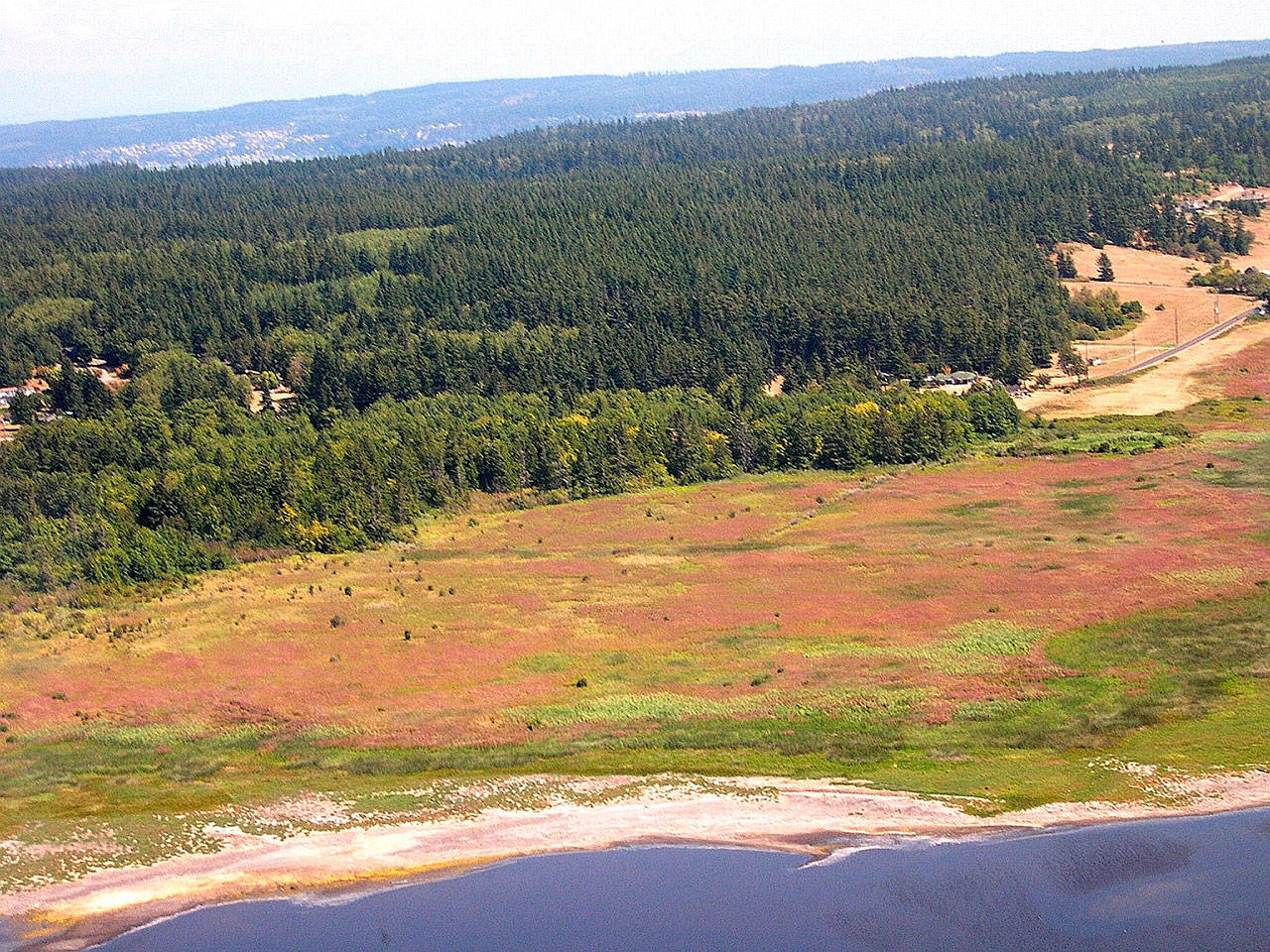Crockett Lake is known for attracting an array of bird species, making it one of Whidbey Island’s most popular destinations for birders.
On windy days, the lake is alluring to kite surfers.
Also rather fond of the lake and its surrounding wetlands is a fuzzy weed that’s crowding out other plants and has long since worn out its welcome.
Whidbey Camano Land Trust is preparing to commence a noxious weed removal project at its nearly 500-acre Crockett Lake Wetland Preserve with much of its efforts focused squarely on the invasive weed known as hairy willow-herb.
The land trust is partnering with the state Department of Fish and Wildlife in an attempt to eradicate the aggressive, fast-spreading weed. It now covers more than 100 acres of the preserve, making it the largest single infestation of the species in Washington State.
“We’re famous,” joked Jessica Larson, land steward for the land trust.
Larson is immersed in the project — she’s even had hairy willow-herb growing in her own yard, which hugs the preserve.
Larson gave a presentation to nearby residents at the Admiral’s Cove Beach Club shelter last week, outlining the land trust’s three-year plan to remove hairy willow-herb, along with other noxious weeds such as blackberries, poison hemlock and thistle.
Noxious weeds are introduced species that can be harmful to both the environment and economy.
Hairy willow-herb, a semi-aquatic perennial herb, is a problem because it spreads rapidly by windblown seeds and through its thick rhizomes underground. It displaces native wetland plants, disrupts wildlife habitat, and can impact hydrology.
Funding from the U.S. Fish and Wildlife Service and the Washington State Recreation and Conservation Office has enabled the land trust to complete the first phase of its project beginning this spring.
State Fish and Wildlife will use its trained crew and specialized equipment to start tackling the weeds mechanically and then by applying approved herbicides.
The crews will use a MarshMaster, a piece of equipment that can travel across wetlands while limiting soil disturbance.
Even though studies showed that herbicides were 99 percent effective in controlling hairy willow-herb, the land trust examined several other options before deciding to move forward with that method, Larson said.
The key rested in utilizing the expertise of State Fish and Wildlife, which will apply two herbicides on the plants before they show their pink flowers so not to impact bees and other pollinators.
“Their crews are trained to do mechanical mowing and herbicide applications in sensitive wetland areas for restoration purposes,” Larson said.
“It is safe,” said Dyanne Sheldon, a land trust board member and a retired restoration ecologist.
“The amount and the method and the timing of the application will fit the state standards for application. Any herbicide poorly used at the wrong time could be dangerous. But this is being used within the state parameters for these two herbicides.”
The MarshMaster could start showing up as early as this month to concentrate on cutting back blackberry bushes on the eastern portion of the wetland preserve, which is most infested with hairy willow-herb and other weeds.
The first phase of the project this year also will include the initial round of herbicide treatments of hairy willow-herb, which might not take place until late June or July.
Volunteer work parties will be used to help with manual removal of the weed in areas where native plants could be impacted by the herbicides.
The land trust is working to obtain additional funding to help with future phases of the project.
State law requires property owners to control hairy willow-herb.
The plant was once sold as an ornamental plant, which is how it is believed to have been introduced to the wetlands around Crockett Lake about 20 years ago.
“All this pink we want to go away,” Larson said, pointing to a map that shows the herb’s vast coverage area. “That’s really the goal of the project, which is to create much better wildlife habitat and improve the functioning of the wetland ecosystem itself so that it can provide lots of great services and be beautiful for everybody to look at.”



